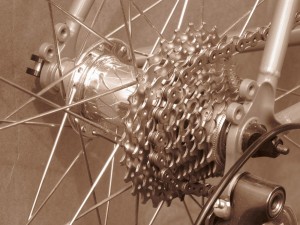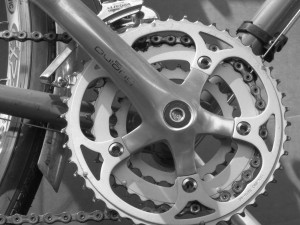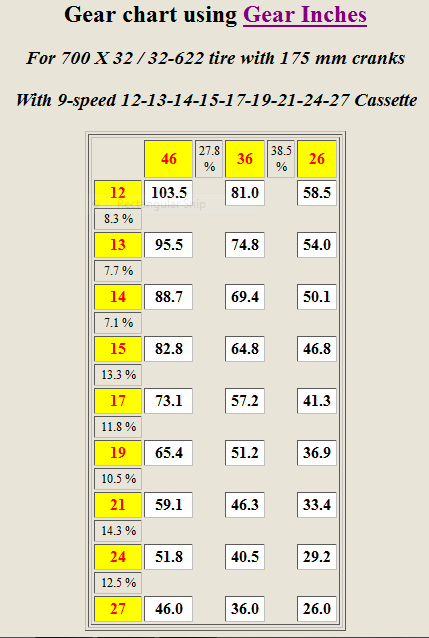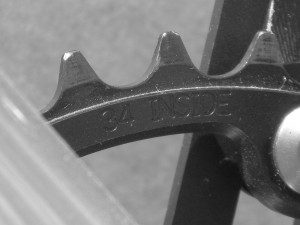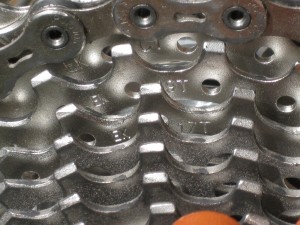“ Hey baby, what kind of gearing you got on that thing?”
What kind indeed. I guess I got gears in the front and gears in the back. But how do I know what my “gearing” is? One way to measure mechanical advantage on a bicycle is to use a concept called “gear inches”. Gear Inches? Huh? Gears have inches? What about gear development? What? Are gears reaching puberty? What’s a gear? On a bicycle we use toothed wheels (the front chainring and the rear cogs) to give us mechanical advantage. That means we can make our legs go around really fast compared to how fast the rear wheel is going around…..like when we are climbing a hill. Or we can make the wheel go around really fast with relatively little motion from our legs…..like when we’re going downhill with a tailwind, just by changing the combination of front and rear chainrings/cogs.
Really, “gear inches” are just a way to quantify the mechanical advantage offered when the chain is engaged on a particular size of front chainring and a particular size of rear cog. A gear inch is not a real unit of measure – “Why are women bad at estimating lengths? Because they have always been told “this is 8 gear inches.””
But it is a useful way to compare different combinations of gears to achieve the riders goal. If I know how many teeth are on each of my front chainrings and on each of my rear cogs I can figure out the gear inches for every combination and plot them on a chart.
The late Sheldon Brown has an online gear calculator that makes figuring gear inches snap like. This chart shows the gearing setup on Chief, my touring bike. I’m using a crankset with chainrings of 46, 36 and 26 teeth and a rear cassette which ranges from a small cog of 12 teeth to a large cog of 27 teeth. Giving me a top gear of 103.5 gear inches when the chain is on the big ring in the front and the small cog in the back…. for those high speed descents, and a climbing gear of 26. If I had a larger big cog in the back and/or a smaller small chainring I would have a lower number for my climbing gear and hence a little more mechanical advantage. Some touring bikes, for example, the Surly Long Haul Trucker come stock with a low gear of 21 -22. The 103.5 top gear has been adequate for my purposes.
Comparing the values on the chart, it becomes apparent that their is some overlap, some redundant gears. Noticeably, the 46/27 (46 tooth cog in the front and 27 tooth cog in the back) and the 36/21. It’s entertaining to play with different gear combinations to try to get the best range with little redundancy. The most important thing though for the touring cyclist is to have a low gear that provides enough mechanical advantage to get them over the hills on their planned route. Knowing that number will only come from experience but 21 to 22 gear inches should work for most people on most routes. For mountainous, off road touring a low gear of 18 to 19 might be more suitable.
